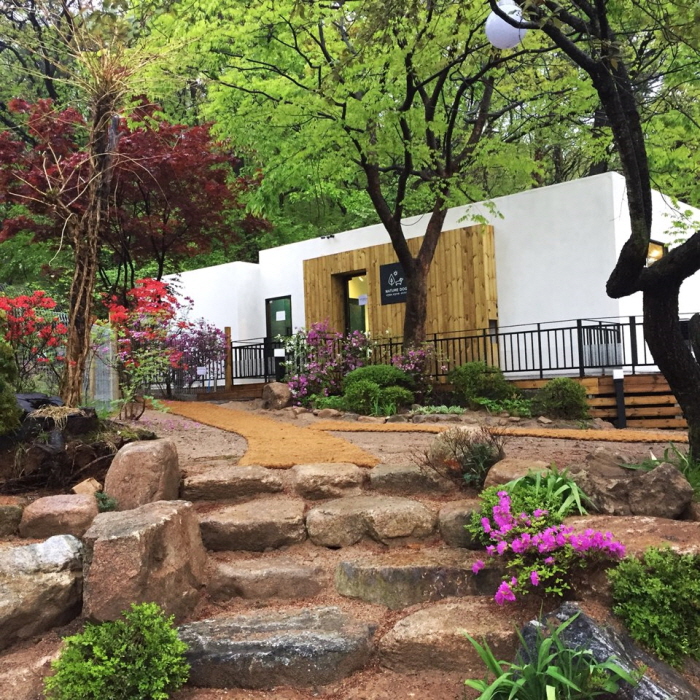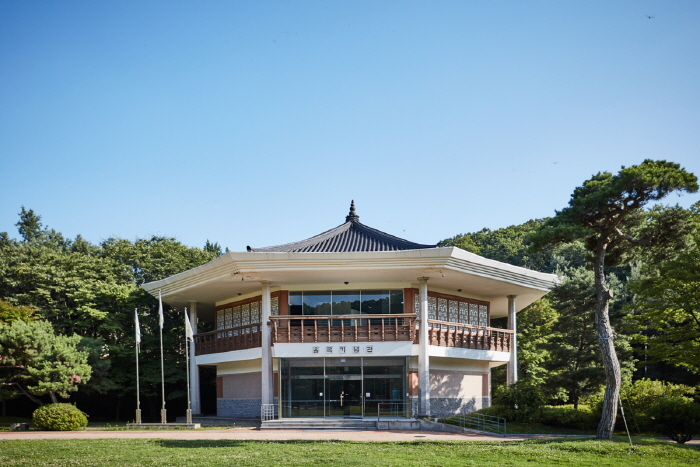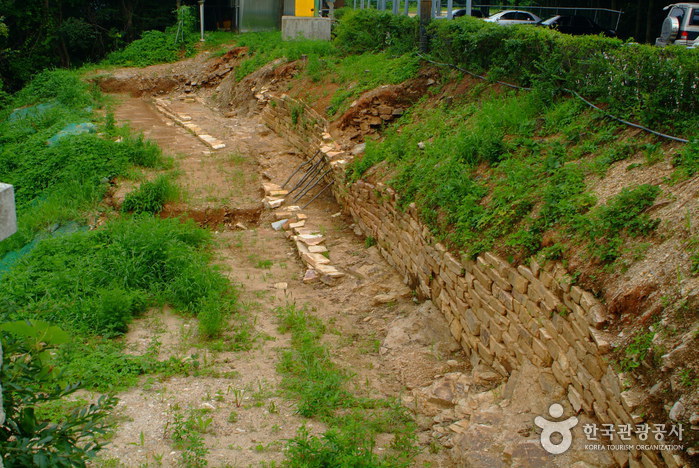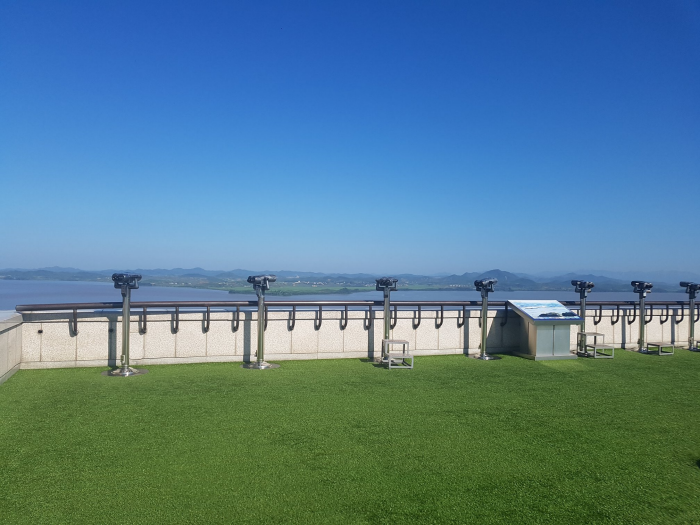Olive Young - Lotte Outlets Goyang Branch [Tax Refund Shop] (올리브영 롯데아울렛고양점)
13.4Km 2024-06-26
P1F, 420, Gwonyul-daero, Deogyang-gu, Goyang-si, Gyeonggi-do
-
Lotte Himart - Goyang Lotte Mart Branch [Tax Refund Shop] (롯데하이마트 고양롯데마트점)
13.5Km 2024-04-19
150, Chungjang-ro, Deogyang-gu, Goyang-si, Gyeonggi-do
-
Lotte Mart - Goyang Branch [Tax Refund Shop] (롯데마트 고양점)
13.5Km 2024-04-22
150, Chungjang-ro, Deogyang-gu, Goyang-si, Gyeonggi-do
-
Hesse Garden ((유)헤세의정원)
13.6Km 2024-02-22
111 Hoguk-ro 550beon-gil, Jangheung-myeon, Yangju-si, Gyeonggi-do
031-877-5113
Hesse Garden is a garden-style integrated culture space named after Herman Hesse, the renowned German literary figure. The garden encompasses various facilities including Grill Hyvää, a barbecue place; Cafe Hyvää, a café and dessert spot; Nature Dog, a dog-friendly café; and Gallery H, an area for exhibitions and performances. The outdoor garden provides a splendid view, adorned with seasonal flowers and ancient trees.
Olive Young - Goyang Haengsin Branch [Tax Refund Shop] (올리브영 고양행신점)
13.7Km 2024-06-27
560, Jungang-ro, Deogyang-gu, Goyang-si, Gyeonggi-do
-
Provence Village (프로방스 마을)
13.7Km 2024-10-31
69 Saeori-ro, Tanhyeon-myeon, Paju-si, Gyeonggi-do
+82-31-946-6353
Provence Village is a themed village that began with the opening of a chic French restaurant in 1996. It has expanded to include a famous bakery cafe, Italian and Korean restaurants, shops, colorful murals, a beautiful garden, and romantic lighting displays in the evenings.
Each unique shop is connected to other shops in the village. An art studio offers a wide array of dishes used in cafes and restaurants in the village; the Living Gallery not only decorates Provence Village, but also makes decorative items such as hand-painted ceramics, available for purchase; and the European bakery boasts fresh, delicious breads. Each shop is an independent unit with a unique design concept. The Living Gallery offers shops selling ceramics, flowers, and herbs, while the Fashion Gallery consists of shops offering clothing, accessories, and interior design items. The Herb Garden hosts a wide array of cultural events and performances for visitors throughout the year.
Yetnal Sigol Babsang (옛날시골밥상)
13.7Km 2024-02-07
110 Saeori-ro, Tanhyeon-myeon, Paju-si, Gyeonggi-do
Yetnal Sigol Babsang is a specialized Korean table d'hote restaurant, situated near the Imjingang River. The set menu comprises eight side dishes, doenjang jjigae (soybean paste jjigae), ogokbap (steamed five-grain rice), and nurungji (scorched rice) as basic items. Customers can choose from main dishes such as ganjang gejang (soy sauce marinated crab), hwangtae gui (grilled dried pollack), and tteokgalbi (grilled galbi patties). The signature menu is the ganjang gejang jeongsik (soy sauce marinated crab set menu). Private dining is also available in separate rooms.
Paju Historical Site Related to Yi I (파주이이유적)
13.7Km 2021-12-10
204, Jaunseowon-ro, Paju-si, Gyeonggi-do
+82-31-958-1749
Paju Historical Site Related to Yi I is dedicated to a great scholar of the mid-Joseon dynasty. He was born to Lee Wonsu and Shin Saimdang in 1536. He passed Saengwonsi, a type of preliminary exam in 1564 (the 9th year of King Myeongjong), and another 9 exams so he was called Gudo Jangwongong. He served in key positions. He is thought to be one of the top two scholars along with Yi Hwang.
Jaunseowon Confucian Academy is home to the tablets of Yulgok Yi I and his family’s graveyard, located at the foot of Jaunsan Mountain. Jaunseowon Monument and Memorial Stone of Yi I Scholar are located here as well. Yulgok Memorial Hall displays his goods, and his biography. In February 2013, Jaunseowon Confucian Academy and the tombs of Yulgok Yi I and his mother Shin Saimdang were individually designated as Gyeonggi-do Cultural Assets, but the whole area as a whole is a designated National Historic Site under the name Historic Site related to Yi I.
Odusanseong Fortress (파주 오두산성)
13.8Km 2024-12-03
Seongdong-ri, Paju-si, Gyeonggi-do
Odusanseong Fortress is built around the strategic summit of Odusasn Mountain. The walls stretch across roughly 620 meters and were built during the Baekje dynasty. The fortress is built on the intersection of the Imjingang River and the Hangang River on the summit of Odusan Mountain (119 meters). The mountain’s slope is steep and stones used in the construction of the fortress walls are scattered here and there at the summit. These scattered stones are evidence that the fortress underwent repairs several times during the Samguk (Three Kingdoms) era and the Joseon dynasty, as these stones were evidently quarried and used to mend the fortress walls. Excavations have discovered a great deal of earthenware, white porcelain, tile, and iron arrowheads. Topographically, the fortress sits on a prime strategic junction and the Unification Observatory has been situated there as well. The fortress stands as an important object of study concerning fortifications and structures from the Baekje dynasty. It has been recorded on the stele of King Gwanggaeto, Samguksagi (History of the Three Kingdoms), in the Naekjebongi (Baekje Annals) and on Daedongyeojido (Map of Korea) that the fortress was the Gwanmi Fortress of Baekje, attracting many scholars and researchers interested in this period.
Odusan Unification Observatory (오두산 통일전망대)
13.8Km 2024-12-03
369 Pilseung-ro, Paju-si, Gyeonggi-do
+82-31-956-9600
Located in Tanhyeon-myeon, Paju-si, Odusan Unification Observatory was established to console the feelings of dispersed families and provide an educational site for the unification education through 5F to B1 in 1992.
The observatory is situated in the northernmost ceasefire line of the western front where the Hangang River and Imjingang River meet. It offers a wide view of Songaksan Mountain in Gaeseong to the north and 63 Building in Seoul to the south. Also, it is a valuable unification security tourist attraction related to Imjingak, the 3rd Tunnel, and Panmunjeom (Joint Security Area) stretching along Jayu-ro Road in the northeast.
Since its opening, almost 1,900,000 people have visited the observatory to feel the reality of the division, making this area the best national unification education site.

![Lotte Himart - Goyang Lotte Mart Branch [Tax Refund Shop] (롯데하이마트 고양롯데마트점)](http://tong.visitkorea.or.kr/cms/resource/61/2890261_image2_1.jpg)
![Lotte Mart - Goyang Branch [Tax Refund Shop] (롯데마트 고양점)](http://tong.visitkorea.or.kr/cms/resource/17/2887817_image2_1.jpg)




 English
English
 한국어
한국어 日本語
日本語 中文(简体)
中文(简体) Deutsch
Deutsch Français
Français Español
Español Русский
Русский